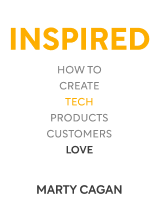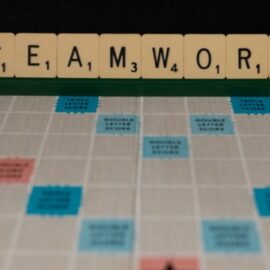

This article is an excerpt from the Shortform book guide to "Inspired" by Marty Cagan. Shortform has the world's best summaries and analyses of books you should be reading.
Like this article? Sign up for a free trial here .
What are the main reasons why new products fail? Does it mean that it’s a bad product? What could the creators have done differently?
In his book Inspired: How to Create Tech Products Customers Love, Marty Cagan says that many new products tend to fail when they’re introduced in the market. However, this is often due to the product development process and not because of the product itself.
Here are the top reasons why new products fail and how to avoid the common pitfalls.
Key Concepts of Product Development
The book Inspired gives companies and entrepreneurs a two-step process for creating and sustaining successful technology products: 1) organize and structure effective teams, and 2) develop products using a flexible “discovery” process. In particular, it explains how important product managers are in product development, teaches them how to be successful, and explains some of the biggest pitfalls that most tech companies fall into when designing products.
Author Marty Cagan, a Silicon Valley product executive, also details how product designers and engineers should function in a team and how company executives should treat their product teams. Originally published in 2008, the book was updated in 2018 to further address evolving concepts such as lean and agile techniques. This summary begins by discussing how to set up teams, then explains how to “discover” or develop products.
Part 1 explains the pitfalls and potential successes of three kinds of technology companies and discusses why some products fail while others succeed, which is what we will be talking about today.
There’s a huge difference between the way most companies develop new products and the way that the best ones do. In this article, we’ll examine why many products fail and then explain how products can succeed. Finally, we’ll discuss the structure of teams and companies. You’ll leave this section with an introduction into how product teams can succeed and pitfalls to avoid.
Why Products Fail
To understand the pitfalls for products, teams, and companies, let’s examine how companies typically develop new products:
- All products begin with an idea.
- Engineers and product managers (team leaders) build upon this idea and create a roadmap for development. The roadmap makes a “business case,” which asks both how much a product will cost to make and how much profit it could lead to.
- Then, product managers figure out requirements for the product to succeed.
- The product is then designed by a user experience (UX) team and built by engineers.
- Finally, a company will test the product, taking surveys of what consumers think of it, and then deploy it to the market.
This process, though, is filled with pitfalls. Some of the most common reasons why new products fail are:
- Product ideas that CEOs greenlight may be related only to sales or to pleasing stakeholders. This disempowers team members and can throttle real innovation.
- It’s almost impossible to know how much money a product will make at such an early stage in its development. Before a product has been built, this amounts to guesswork. Additionally, before a product has been built it’s impossible to know how much it will cost to build. There are all kinds of factors that go into the cost of building technology, and we can’t guess what will take a longer or shorter amount of time or more or fewer resources before something is built.
- Roadmaps are usually just a list of features that people want to see included in the product. However, we have no idea what features will and won’t work. In fact, a lot of our ideas either won’t be built, will cost too much money, or won’t excite customers the way we hoped they would.
- UX designers come into the process so late in the game that they’re attempting to design something that, because of how the ideas have been constructed, they often can’t make user-friendly. Engineers are similarly brought into the process so late that they can’t point out potential flaws in a product.
- All of the risks in the process are loaded toward the end. If test customers don’t like the product, then a company has poured all of this effort and money into the production of something that isn’t going to be marketable. They’ve also lost time, and with it, incurred a huge opportunity cost.
How Products Can Succeed
Now that we’ve examined the usual way of creating products and the reasons that they fail, there are three ways we can do better.
- Incur risk at the beginning of the process—before launching the product, ask whether customers will buy it, whether the product is buildable at a reasonable price-point, and whether the product is marketable or fits in with the larger sales goals of the company. This contrasts with companies that ask these questions after they’ve launched a new product.
- Bring user experience (UX) designers and engineers into the idea-creation stage. The product manager shouldn’t be the only one responsible for idea creation—she should also receive ideas and figure out what the team needs collaboratively.
- Think about the goals of products differently. Products are meant to solve problems that customers have; they’re not blank slates on which executives can suggest new features that pop into their heads.
We’ll return to these three major concepts throughout the book.
Discovery and Delivery
Product teams that are following the rules laid out above engage in a continuous process of discovery and delivery. Think of these two concepts as parallel lines—good teams work on discovery and delivery separately but concurrently.
Discovery
Product managers consider what the product needs (discovery). The discovery process, which the summary will discuss in Part 4, attempts to answer the following four questions:
- Do consumers want the product?
- Can consumers understand the product’s functionality?
- Do our engineers have the tools to build this?
- Do we have the money and support to create this?
To answer these questions, companies should build quick and fairly simple prototypes to test on focus groups.
Delivery
Engineers consider how to implement product needs (delivery). As we stated before, engineers can also be useful in the discovery process, but their primary role is on the delivery front. If the prototypes are popular and working well, and we’ve answered ‘yes’ to all of the four questions above, engineers should concern themselves with questions of how to get the product or feature to market, scaling up production, making sure performance is good across the board, and doing the necessary safety checks on questions of privacy and security.
There’s a big difference between a product being impressive and its being successful. And no matter how good your engineering team is, if they’re building a product that people don’t want, it won’t sell.

———End of Preview———
Like what you just read? Read the rest of the world's best book summary and analysis of Marty Cagan's "Inspired" at Shortform .
Here's what you'll find in our full Inspired summary :
- A two-step plan for creating and sustaining successful technology products
- Why product managers are so important in product development
- How to avoid some of the biggest pitfalls that most tech companies fall into






